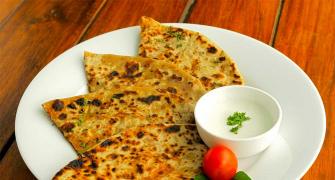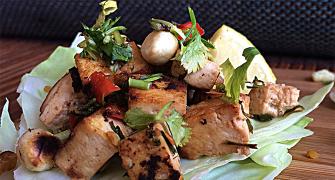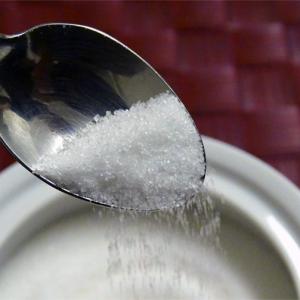'These are foods that are very common in the Indian diet... Naan, chapatti, rice...'
'Those processed carbohydrates are far worse for body weight and heart health than the fats they replaced.'
'The problem with these foods is that even if there isn't any obvious sugar in them, they turn to sugar very quickly.'
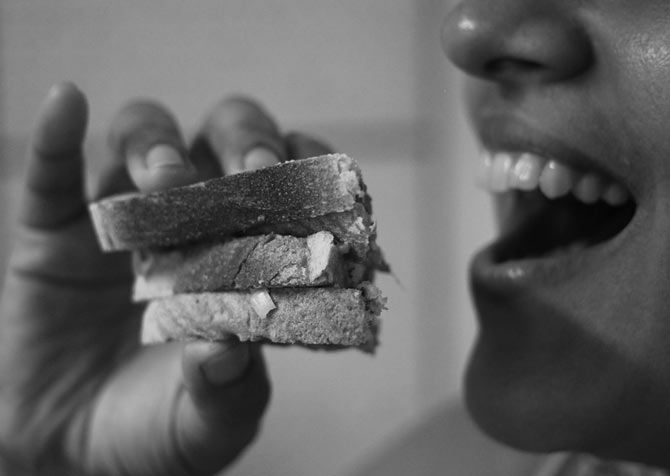
Does feeling constantly hungry make you feel guilty?
Lunch just went by. You had three rotis. Even some rice. And your sabzi.
Yet three hours later, or less, you are hungry again.
How much can you eat? You are not even slim!
You didn't do anything more strenuous, all day, than sit at your desk and type a couple of characters on your laptop.
No morning jog. Or treadmill run. Not a single calorie sweated out to justify your vicious returning hunger.
What kind of nasty metabolism do you own, hmm?
Fear not, the 'Obesity Warrior', as he has been dubbed, is here -- Dr David Ludwig.
Professor Ludwig, on a regular day, can be found at the department of nutrition, Harvard Medical School and Harvard School of Public Health doing research and teaching.

Dr Ludwig is one of the world's leading authorities on carbohydrates. Through years of research, he has identified the consequences of what you eat on your metabolism, weight and hormones.
He is part of a new band of nutrition experts bringing about that long-overdue food rebellion to defeat the low-fat mania that has seized control of grocery aisles, world over, for four decades.
Dr Ludwig invented the low-glycemic-load diet. Nothing unfathomable here.
It is simply a balanced food regime that aims to kill the surge in blood sugar after meals, which is the most effective way to treat obesity-related diseases.
This obesity doctor -- who lives with his kids Joy and Benji and chef wife Dawn in Brookline, Massachusetts, and prefers biking over the weekends -- is quite familiar with Indian food.
As he speaks, offering solutions, he incorporates advice related to our diet.
"I've been there. Loved India. I even have an Indian name in addition to my American name -- Dhanvantari (which means physician to the gods)! I have an Indian spiritual teacher and went on a pilgrimage to India with him. We traveled around Bombay (Mumbai) and in the South. So I got to know Indian culture very well and Indian cuisine."
"I have a long term affiliation and fondness for India," he says. "There's great wisdom (in India).<"/p>
"There's also great suffering from poverty and poor nutrition. It is really an honour for me to provide any advice I can," he adds.
His new book Always Hungry?: Conquer Cravings, Retrain Your Fat Cells and Lose Weight Permanently sat entrenched on The New York Times bestseller list for many weeks this year, hitting the top spot too.
Dr Ludwig believes in, once and for all, ending this war where your mind and metabolism are not on the same team and hunger rules.
According to him overeating doesn't make you fat, but the process of getting fat makes you overeat.
In an interview, conducted over the phone from Boston with Rediff.com's Vaihayasi Pande Daniel, Dr Ludwig suggests what Indians can do to change their lives.
India's middle and the upper classes have been facing something of an obesity and diabetes epidemic for many years now.
For those of us quite confused by low-fat diets and the variety of information wandering about the place, what is best advice you can offer?
How can one common-sensically plan one's nutrition?
The first question we need to consider: Is there an optimal diet for people?
Or is there really a range of diets.
And what is best for a specific population in view of their genetics, lifestyle and existing diseases.
What might work for a farmer in the fields, engaged in manual labour 14 hours a day, will be very different from what will support the health of a desk worker, sitting in front of a computer terminal for much of the day, who has already developed a weight problem.
Back in the 1970s, 1980s, the American government and nutrition organisations began to recommend a low-fat diet -- a message that quickly spread around the world, thinking that if you don't want fat on your body, don't put fat into your body. This recommendation was never based on any hard science.
Unfortunately, the obesity epidemic in the United States exploded, just as the American public was focusing on cutting back fat.
The problem with the low-fat diet that we have eaten is that it tends to be high in processed carbohydrates.
When we cut back on fat, we didn't eat more fruits, vegetables, beans. We wound up eating more processed grains and added sugar.
These are foods that are very common in the Indian diet. Naan, chapatti, rice...
Those processed carbohydrates are far worse for body weight and heart health than the fats they replaced.
The problem with these foods is that even if there isn't any obvious sugar in them, they turn to sugar very quickly.
We should add to that list -- potato products.
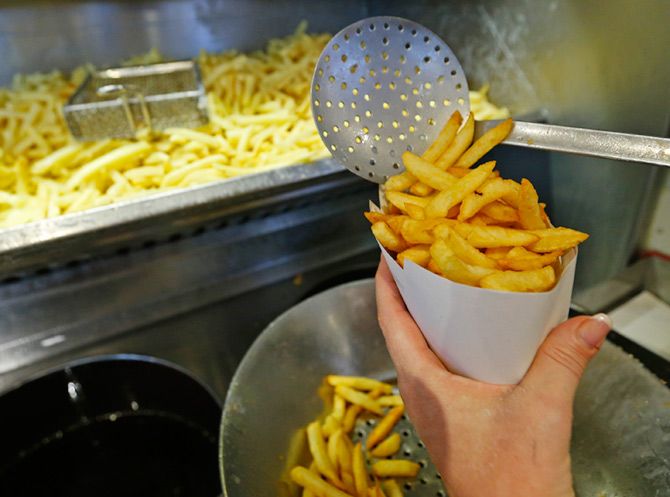
When you say potato products, does that include boiled potatoes with skins on them?
It depends on what kind of potatoes. The potatoes we are eating today are highly hybridised.
They have been bred for taste and quick digestion and no longer resemble the ancestral (varieties) that were consumed thousands of years again. Unfortunately most potato products fall in the same category.
All these processed carbohydrates (processed grain, sugar and potato) just digest into sugar very rapidly.
After eating -- whether it is a bowl of cornflakes, a bagel or too much white rice -- blood sugar, within minutes, sky rockets. That sends insulin levels streaming up.
The body releases a lot more insulin after eating processed carbohydrates, compared (to) anything else, for the same amount (serving) of food.
So what's the problem with the insulin?
Insulin brings the blood sugar down. It does that by sending calories into storage sites. The storage sites getting the most stimulation are the fat cells.
I call this Endocrinology 101, very straight-forward biology. If you give someone with diabetes too much insulin, they will predictably get hungry and gain weight. The same happens in the research laboratory.
Insulin stimulates fat cells to grow. Plain and simple.*
If you don't have diabetes, these processed carbohydrates are the most potent way to raise insulin levels, stimulating the fat cells to grow.
If we eat these foods, then our fat cells wind up taking in too many calories.
With too much insulin, fat cells go into calorie storage overdrive, and there actually aren't enough for the rest of the body.
So they (fat cells) feast. But those calories aren't available in the appropriate amount for the muscles, the organs, and importantly, for the brain.
That's why we get hungry.
After eating a meal with lots of processed carbohydrates, we are going tend to get hungry sooner. It is going to be harder to avoid overeating.
It is very difficult to ignore hunger, especially if you were surrounded by tasty food.
Even if you were able to ignore hunger, the body would continue to fight you. Importantly by slowing metabolic rate and releasing stress hormones.
The combination of rising hunger and slowing metabolism is a recipe for weight gain.
This is especially a problem for a population like India (battling) overweight and insulin resistance.
When you already have those two problems -- insulin resistance occurs to those (suffering) weight gain. It is also a special problem for India.
For a population with that problem, these processed carbohydrates, in high amounts, are the worst things that can be eaten.
Lastly, to make things even worse, what would normally balance the effects of the processed carbohydrates, which is protein -- they kind of act in an opposite way to carbohydrates -- tend to be eaten in relatively low amounts by Indians.
High-processed carbohydrates, low amounts of protein, underlying overweight and insulin resistance and an increasing sedentary lifestyle is a recipe for disaster.

Photograph: Kind courtesy Jacqueline/Creative Commons
Indians don't digest carbohydrates the way other races do. But this probably wasn't a problem for Indians maybe 100 years ago.
Why has it become a modern problem for us?
That's where we started.
Remember if you are working 14 hours a day in the fields (or are much more physically active as previous generations were) your problem is going to be the opposite.
(It is about) getting enough food to keep you from being underweight. All that physical activity enhances insulin sensitivity.
So the processed carbohydrates kept the peasant population alive, kept them from starving.
Now that they are moving to the cities, bringing the high carbohydrate diet (with them) but leaving their non-sedentary activities behind, we are seeing mounting metabolic problems.
So in India diabetes is a rich man's disease?
A rich man can eat a much higher quality diet. He can be eating plenty of protein, healthy fats and good quality carbohydrates.
Essentially, an Indian today is bringing his poor man's diet (to the city), but leaving behind his hard levels of physical activity, which had protected him.
It is not a problem digesting carbohydrates. It is a problem metabolising it or handling it.
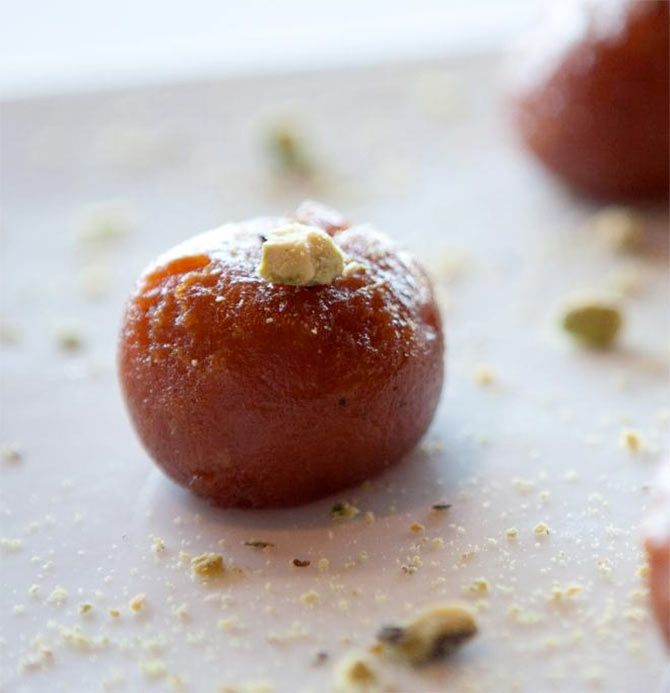
Photograph: Kind courtesy Aamer Javed/Creative Commons
Diabetes is a simply condition where those carbohydrates, when consumed, can't be handled by the body anymore. They build up in the bloodstream.
It is called carbohydrate intolerance. What is the sense in giving more carbohydrates to people who by definition have carbohydrate intolerance?
I consider this science in depth in my new book, Always Hungry.
The programme that we offer is a much higher fat diet. It does not eliminate all carbohydrates. But we focus on reducing the processed carbohydrates, increasing fat and getting a balanced amount of protein.
What that does is: It aims to lower insulin resistance and calm a related condition, chronic inflammation (chronic inflammation is the body's biological response to dangerous stimuli leading to a variety of diseases from hay fever, periodontitis, atherosclerosis, rheumatoid arthritis to even cancer).
Insulin resistance and chronic inflammation are the two underlying metabolic problems that underline most chronic disease, diabetes, also heart disease.
(Once you change your diet in this manner) it is much easier for the body to find a healthy weight. And chronic disease risk factors drop most effectively.
Is there a possibility that diabetes is hereditary? If so, is it dominantly so? Or is simply the lifestyle hereditary?
Or, as you explained, carb intolerance is simply in the genes of all Indians and therefore hereditary?
Genes (inherited tendency) affects an individual's susceptibility, but environment determines whether or not you will actually get diabetes.
Remember, diabetes was rare until recently in India, limited to wealthy people with sedentary lives.
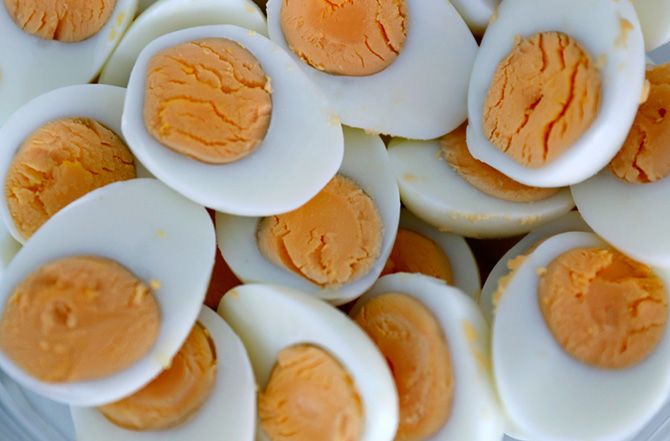
>Photograph: Kai Pfaffenbach/Reuters
I read about the low-glycemic diet (one that decreases the surge in blood sugar after meals for the treatment of obesity-related diseases) you advise.
I am trying to understand this diet through the prism of what we have available in India.
Whole grains like quinoa etc are well beyond our grasp and are expensive.
So what should we eat?
Red meat and white meat are fine. But maybe not that much red meat?
Eggs are good. Butter too.
We want to do this in three easy steps for India, which you say, doesn't necessarily have universal access to all of whole grains:
The first step is actually easy and tasty. We want to bring total carbohydrates down.
We don't want to just eliminate them and have people hungry. You replace them with nutritious and delicious fats.
Now many of them are well-known to Indian cooking. Indians like cooking with fats.
Like ghee?
Ghee, a saturated fat, is fine in moderate amounts (including frying).
Virtually all nuts including peanuts, walnuts, almonds, cashews.
Nuts are mostly fat. Highly nutritious. They don't promote weight gain.
Good for the waist. Great for the heart.
You want to get plenty of mono- and poly-unsaturated fats present in nuts, olive oil, avocado, non-hydrogenated vegetable oils and fish.
Regarding amounts, I generally recommend that total fat equal about 40 per cent of calories, carbohydrate 40 per cent and protein the remaining 20 per cent.
So increase fats. (Like) avocados, nuts, nut butters, olive oil, full-fat dairy.
Let's not get onto this fat-free dairy craze that's swept America and Europe.
Eating more fat, overall, makes it easier to reduce the total amounts of carbohydrates. That's step one.
Step 2 is (about) the carbohydrates we eat -- we want them to be as unprocessed as possible.
You know, that doesn't mean getting rid of all white rice. But we want to reduce the processed carbohydrates.
If you are having rice, don't have naan with it.
Don't have a sweet dessert with that too.
We want to reduce the processed carbohydrates and build up the natural carbohydrates, which are fruits, vegetables. And beans (legumes/dals/lentils) for which India has a wonderful tradition.

So how much white rice is okay?
This depends on how big and active a person is.
A tall man doing physical labur all day will, of course, (require) different amounts from a small woman working a desk job.
For the average person, especially those at risk for diabetes, I suggest limiting grains to at most 3 servings (1/2 cup, cooked) per day.
India has its own grains like jowar and bajra. They are good right?
Yes, any kind of unprocessed whole grain, including traditional ones.
So we are reducing total carbohydrate by increasing fat. Then we are shifting the remaining carbohydrates to unprocessed, as much as possible.
The third step is to get an adequate amount of protein.
Now we are not talking about 16 ounces of meat with every meal. You don't want to overdo the protein.
Many people in India don't eat red meat for religious reasons. Especially beef.
There are wonderful sources of protein other than red meat... If you are eating fish or chicken, that's great.
Asia has a wonderful tradition of plant-based protein that come from soy.
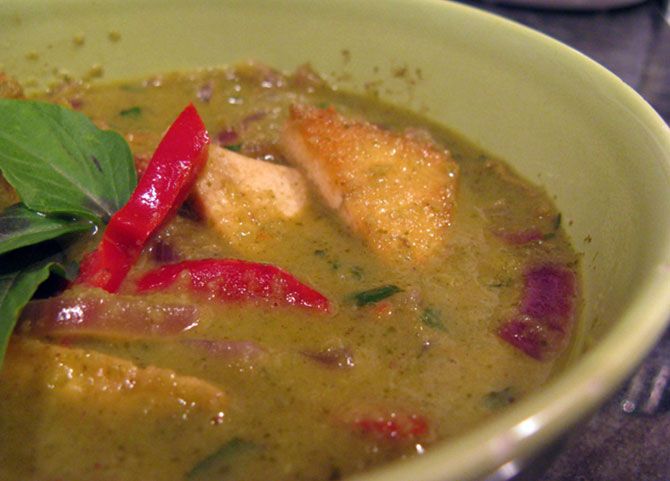
Photograph: Kind courtesy Sara Jane/Creative Commons
I don't know how available tofu is, but tofu would be a wonderful addition to the Indian diet.
It's high in protein. It's also got some good amount of fat in it.
It kind of cooks like you would cook paneer. It takes on the flavors of whatever dal, chutney... that you are making.
Adding tofu and beans, especially for vegetarians, will really help enormously.
Then eggs and cheese are perfectly fine as well. And so we are aiming for medium -- not an Atkins type of (high) protein (The Atkins Diet was devised by cardiologist Robert Atkins) -- but we got to get the protein up.
Protein has some unique benefits for metabolism and for satiety, feeling full, staying full after the meal.
How about seafood versus fish? Shrimp, crab? Is there any no-go area among seafood?
With seafood the main issue -- if you are eating seafood frequently -- is to get ones that don't have too much mercury.
We want to be eating small fish, rather than big fish.
Shrimp is okay. Crab is okay.
Lobster is actually pretty high (in mercury) because it tends to do a lot of scavenging. Lobster is a bit of a concern.
Then the big fish -- swordfish, tuna, mackerel, shark -- you want to tend to avoid, because they are quite high in mercury.
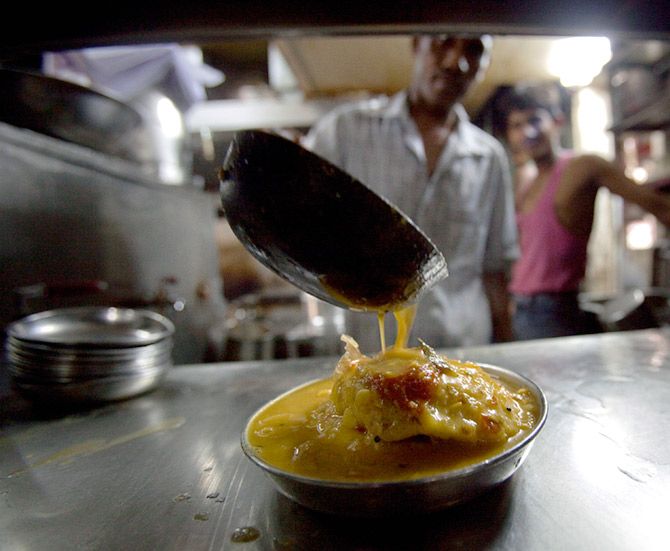
So processed carbohydrates are not good. But what if you are consuming something made from organic processed flour? Isn't that better?
The main thing is the processing.
You want to get bread that's less processed. If you can get a stone-ground bread, rather than a highly processed bread. Or a fermented bread. Or idli. These fermented grain products are better.
Is a fermented processed grain product better than a non-fermented processed grain product?
Yes.
I have understood that cholesterol is good for you. Although one needn't go overboard with anything, there is no harm in eating something that has cholesterol?
Yes. We really don't need to worry about the cholesterol in our diet in most situations.
****
* As an example, a child with new onset Type 1 diabetes (and unable to make enough insulin) will have invariably lost weight when first coming to medical attention.
Give that child the right amount of insulin and weight gain normalises, but give that child too much insulin, and he'll predictably gain weight.
For more information about Dr David Ludwig' s three-phase programme, his diet plan, recipes and food philosophy, please check his Web site drdavidludwig.com

